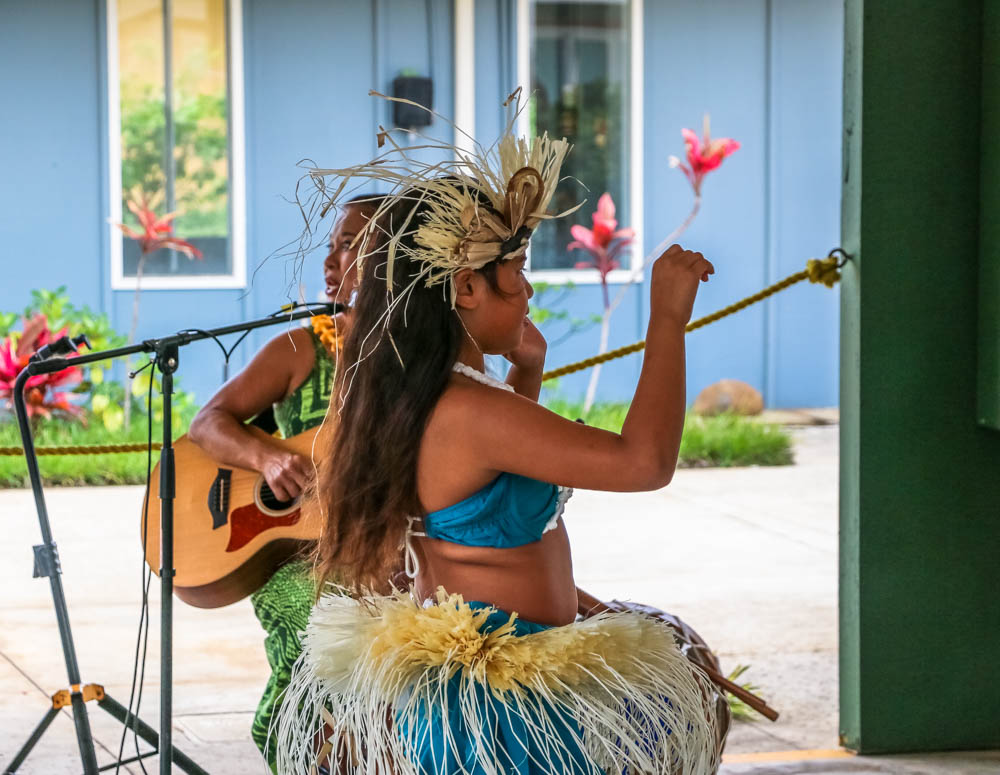Hula is more than just a traditional dance. It’s an essential part of Hawaiian culture, a tradition closely linked to Hawaiian language and history.
Last updated: February 6, 2024
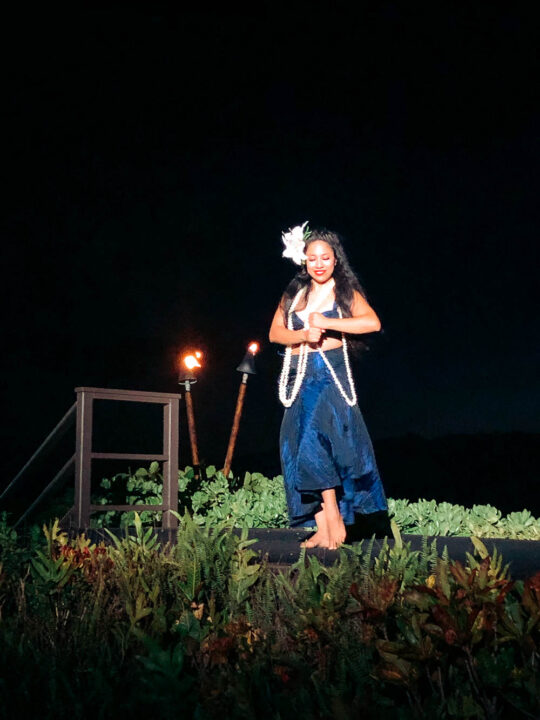
Hula Craze
Music was getting louder and louder. First chants, then the sound of drums broke the serenity that normally busy Ka’anapali Beach acquired at the end of the day. But instead of interfering with the evening calmness intensified by pastel hues of the sky, the traditional Hawaiian music merged with the surroundings in the most cohesive manner.
We heard the same music for the second evening in a row. That must have been a hula show, a dance performed so differently on every Hawaiian island, yet such an important part of the entire culture. The traditional music and the highly anticipated hula dance pulled us like a magnet. Based on my research prior to our trip to Maui, I knew that Ka’anapali Beach hosted free hula shows every evening.
So we followed the bombastic sound. A short walk on the beach, and we ended up in front of the Sheraton Resort. To our right, on a stage with a thin bamboo wall that obscured the view of towering buildings behind it, beautiful hula dancers moved to the rhythm of the drum beats and ukulele tunes.
Only a day later, we found out that instead of a free hula show we had hoped to find on the beach, we had spent an evening enjoying a visual part of luau. Similar to all luaus, the traditional Hawaiian feast at the Sheraton Resort included Hawaiian food, island music, Hawaiian and Polynesian dancing, and last but not least Hawaiian hula.
The Heartbeat of the Hawaiians
Hula is more than just a dance. It’s engraved in every part of Hawaiian culture, language, and way of life. Hula connects the past and presence. It transcends time, reviving traditions that once were marginalized and almost extinguished.
As King Kalakaua said, “Hula is the language of the heart. Therefore the heartbeat of the Hawaiian people.”
The traditional dance with graceful movement of hands, eyes, hips, and legs is the ultimate expression of art. Every hula move requires precision. But it’s the hands that tell the story and legends about the Hawaiian Islands, culture, and nature.
Slow and graceful in some hulas, but swift and brisk in the others, the hands of the dancers convey the words and ideas, such as coconut trees swaying in the tropical wind or large waves building up in the fearsome ocean. But once the ocean is calm, there’s no other place you’d rather be. And there is no other dance or music you’d rather watch and listen to at that moment.
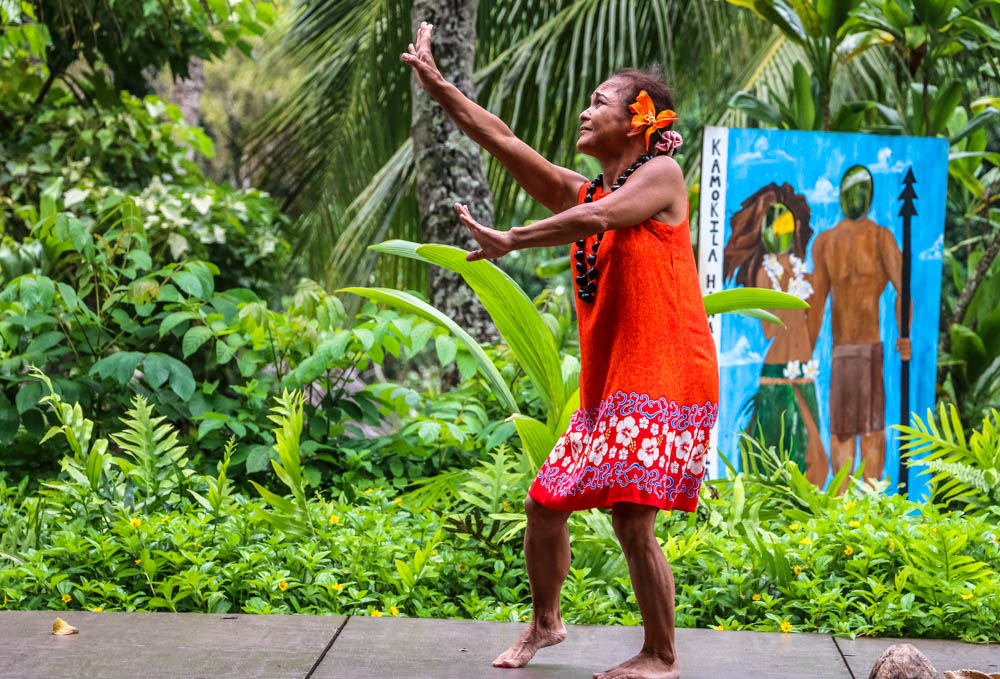
The Story of Hawaiian Hula
Hula ʻauana or modern hula honors the Hawaiian Islands and everything they present. The dance shows respect to trees, flowers, forces of nature, and the Hawaiians, people that have preserved the art of hula for centuries.
Hula kahiko or ancient hula focused mainly on honoring gods and high chiefs. Accompanied with chants and drums, the swift moves of hula kahiko narrated about never-ending battles, creation of the islands, and lava flow. Often the dance honored Pele, the Hawaiian goddess of volcano and fire.
In the early 19th century, this utmost devotion to different deities alerted Christian missionaries. Hula was deemed a pagan ritual. All public performances were shunned. With still no written language to pass the ancient Hawaiian traditions from generation to generation, the hula dance was facing an imminent extinction.
Halau hula (hula schools) operated only in rural villages. Meeting their students in caves and sugarcane plantations, kumu hula (hula teachers) continued to teach and perform the once so loved and cherished, now forbidden dance.
In 1883, King David Kalakaua, an avid advocate of the old Hawaiian traditions, restored hula to its former glory. By this time, however, the hula dance had changed. Accepting Christian dogmas, hula’s chants became more melodic and resembled Christian hymns. Through their music and dances, the Hawaiians honored flowers, trees, rain, their king and queen. The legends of the old gods and the birth of the islands ceased to be hula topics.
But the revival of hula was short-lived. In 1893, American businessmen overthrew King Kalākaua’s successor Queen Liliʻuokalani. Five years later, the U.S. annexed Hawaii. The new government established new rules. The Hawaiian language was shunned. And since the booming chants shouted in the native language preceded the hula movements, the dance also was on the verge of complete disappearance.
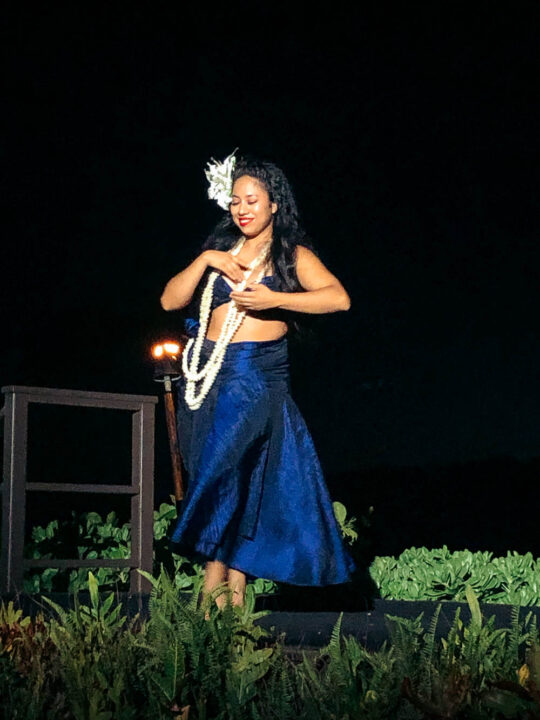
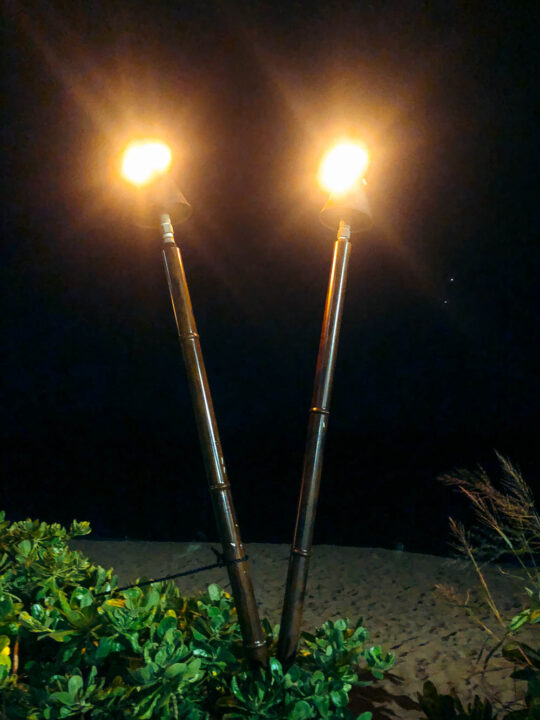
Revival of Hawaiian Hula
The rescue came from Hollywood. Depicting hula as an exotic dance from the tropical islands, the movie industry stimulated the rebirth of the ancient dancing traditions. But changes were inevitable. Hawaiian hula became more commercialized, with cellophane skirts and coconut shell bras.
At first, modern hula entertained mostly guests flocking to the Hawaiian Islands from the U.S. mainland. But with the growing demand for authenticity, this slowly started shifting. The old traditions met the new ones. Hula kahiko integrated with hula ʻauana. Large hotels and resorts themselves forged the change, offering hula performances and lessons.
These hula shows or luaus usually include Hawaiian traditional food and are in great demand, despite a hefty price tag. Reserving a spot at one of these Hawaiian feasts at the last moment is almost impossible. The seats are normally booked months in advance.
But if you are willing to dig a little bit deeper and ask some locals, you may come across free hula shows. We stumbled upon a few small-scale hula performances on our first trip to Kauai a few years ago. Free hula shows performed by students are also not uncommon at shopping centers on the other Hawaiian Islands.
And since hula is the heartbeat of the Hawaiian culture, you can see it performed on beaches, in parks, and everywhere where the Aloha Spirit is practiced and cherished.
Read more: Top 9 Cultural Destinations in the USA | Cultural Trips in America
